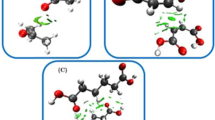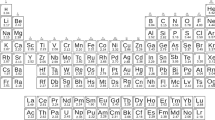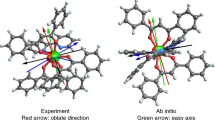Abstract
ONE of the most difficult problems in the theory of chemical valency is to form a clear picture of the attractive forces between similar atoms. Lewis and Langmuir, in their theory of the cubical atom, have each attributed the single valency bond to the mutual action between a pair of electrons, and Langmuir has recently pointed out (NATURE, April 29, p. 261) that, as regards chemical considerations, such a pair of electrons may be regarded as revolving in the same orbit. This idea is closely allied to Bohr's construction for the hydrogen molecule. It should, however, be pointed out that such a construction leads to a strong paramagnetic property for molecular hydrogen, unless the electron motions are compensated by rotation of the nuclear charges. Such compensation is scarcely likely, since the magnetic moment depends on the area of the orbit described, and evidence up to date points to a nuclear radius of small order compared with that of the electron orbit, even though the latter be small compared with the conventional radius of the atom.
This is a preview of subscription content, access via your institution
Access options
Subscribe to this journal
Receive 51 print issues and online access
$199.00 per year
only $3.90 per issue
Buy this article
- Purchase on Springer Link
- Instant access to full article PDF
Prices may be subject to local taxes which are calculated during checkout
Similar content being viewed by others
Author information
Authors and Affiliations
Rights and permissions
About this article
Cite this article
OXLEY, A. Atomic and Molecular Forces and Crystal Structure. Nature 105, 327–328 (1920). https://doi.org/10.1038/105327c0
Issue Date:
DOI: https://doi.org/10.1038/105327c0
Comments
By submitting a comment you agree to abide by our Terms and Community Guidelines. If you find something abusive or that does not comply with our terms or guidelines please flag it as inappropriate.



